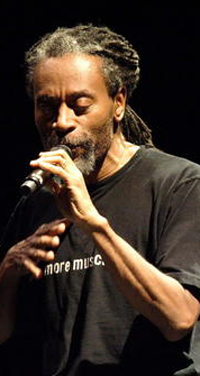genre family: Solo Vocal Music
 The voice, of course, is the most natural of instruments. It is the only one capable of conveying both music and text, and thus it has played an essential role in the history of Western art music. Indeed, until the 17th century, the voice was the dominant medium of composition and performance in Europe, with purely instrumental music gaining an equal status only in the mid-Baroque era. Most of the primary musical developments of Western art music – mode, rhythm, counterpoint, and harmony – took place through advances in purely vocal composition during the Medieval, Renaissance, and early Baroque eras, in genres such as (Gregorian) chant, the motet, the Mass, the chanson, and the madrigal.
The voice, of course, is the most natural of instruments. It is the only one capable of conveying both music and text, and thus it has played an essential role in the history of Western art music. Indeed, until the 17th century, the voice was the dominant medium of composition and performance in Europe, with purely instrumental music gaining an equal status only in the mid-Baroque era. Most of the primary musical developments of Western art music – mode, rhythm, counterpoint, and harmony – took place through advances in purely vocal composition during the Medieval, Renaissance, and early Baroque eras, in genres such as (Gregorian) chant, the motet, the Mass, the chanson, and the madrigal.
The literature for solo vocal music, as opposed to choral or ensemble vocal music, extends back to the early Medieval period, namely via secular genres such as the Troubadour and Trouvère repertories of the 12th and 13th centuries – which were likely sung a cappella or with improvised instrumental accompaniment; the polyphonic chansons of the 14th century, such as those by Guillaume de Machaut, were very likely sung by solo singers with instrumental accompaniment as well. In the Renaissance, however, nearly all vocal genres were sung by choirs or vocal ensembles – including the chanson and the madrigal; a few exception include the frottola (e.g., by Marchetto Cara) – a group of Italian secular forms popular in the late 15th and early 16th century – and the lute song (especially by English composers such as John Dowland), which were more explicitly written for solo voice (often soprano) and light instrumental accompaniment.
With the onset of the Baroque era, and its emphasis on the distinction between melody and accompaniment, the solo voice gained new prominence – especially within the new genre of opera, but also with the solo madrigal and related genres. By the mid-17th century, a host of new genres arose – including the cantata, the oratorio, the solo motet, and the stand-alone aria – that featured the accompanied solo voice, either exclusively or in tandem with choral sections or movements. These genres reached their peak in the works of the late-Baroque masters, Antonio Vivaldi, J.S. Bach, and George Frideric Handel. During the Classical era – and especially in the work of Wolfgang Amadeus Mozart, solo vocal writing reached new heights in terms of virtuosity and expression – principally within opera, but likewise in the stand-alone aria and in various secular and sacred genres that are predominantly choral in nature. In the Romantic era, the solo vocal genre of the Lied or “Art Song”, usually with piano accompaniment only, gained a new priority, where it perfectly suited the Romantic impulse for personal and emotional expression – most importantly in those by Franz Schubert, Robert Schumann, and Johannes Brahms. The expressive appeal of the solo song quickly spread to other non-Germanic lands, especially France (e.g., Gabriel Fauré, Claude Debussy, Maurice Ravel) and Russia (e.g., Mikhail Glinka, Modest Mussorgsky, Nikolay Rimsky-Korsakov), and later the United States (e.g., Ned Rorem, Samuel Barber). Of course, the fascination with the solo voice has continued throughout the Modern and Contemporary periods – as in the works of such composers as Benjamen Britten, Luciano Berio, and Libby Larsen, among many others – both within opera, and in a myriad of genres and approaches with piano, chamber, or orchestral accompaniment.

Nolan Gasser, PhD
Artistic Director













